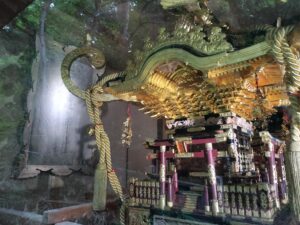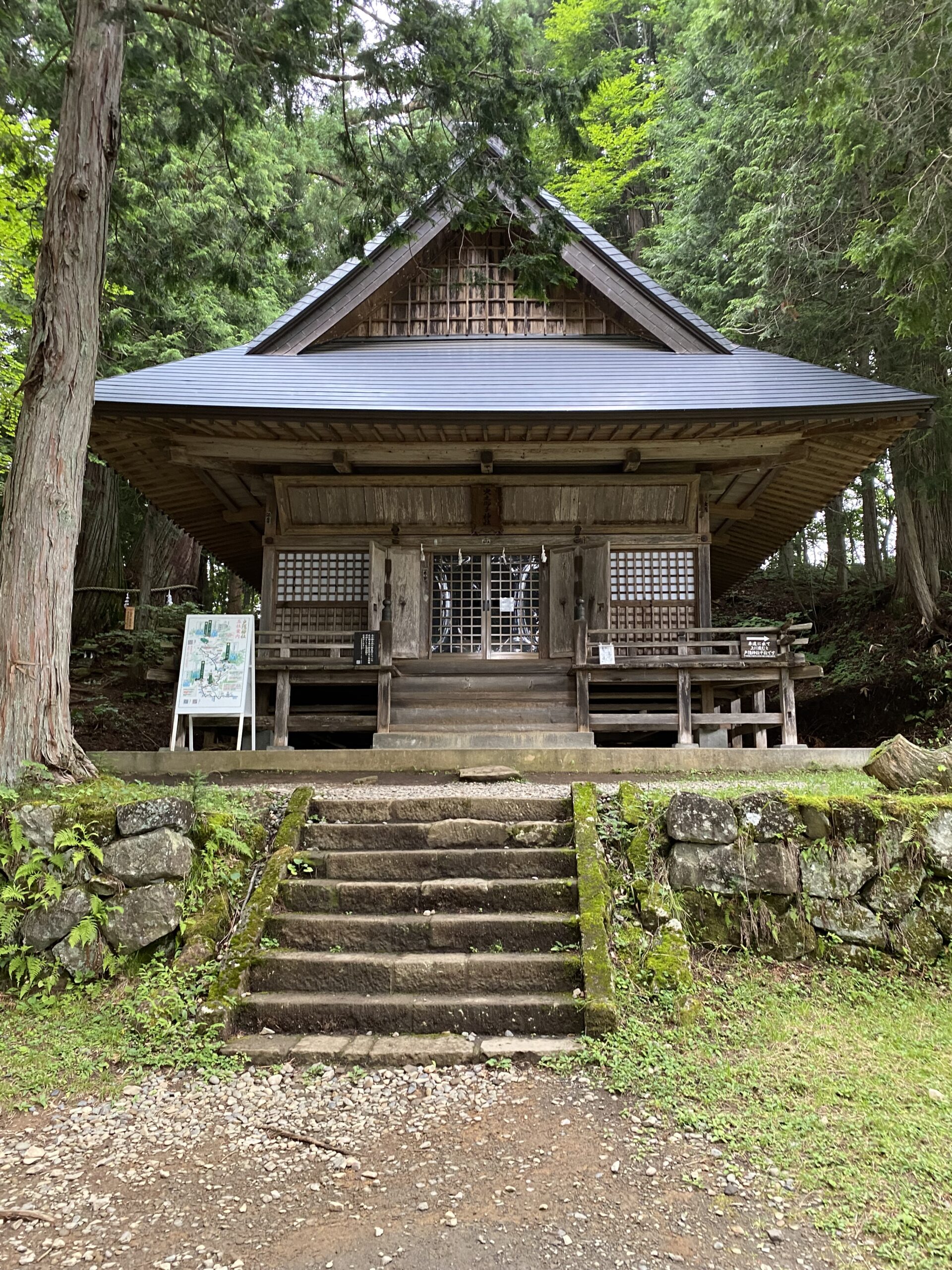After you worshipped at Houko-sha Shrine, you may find two portable shrines (Mikoshi) in a storehouse in Houko-sha Shrine Precinct.
 New Portable Shrine in the left
New Portable Shrine in the left
The portable shrine in the right is old one which made in 1804. Since this portable shrine became old, new portable shrine in the left was made in 1991.
Every 6 years, the festival of Togakushi Jinja Shrine has been held, in years of the ox and in years of the sheep. As I mentioned in my previous blog, Togakushi Jinja Shrine consists of 5 shrines, Oku-sha Shrine, Kuzuryu-sha Shrine, Shu-sha Shrine, Hinomiko-sha Shrine and Houko-sha Shrine. In the past, the portable shrine was carried (traveled) to Oku-sha Shrine from Houko-sha Shrine. However, now, it was changed. Deity of Houko-sha Shrine is Ame-no-uwaharu-no-mikoto (the god protecting women and children) who is a son of Deity of Chu-sha Shrine, Ame-no-yagokoro-omoikane-no-mikoto (the god of wisdom). Therefore, currently, during the festival, the portable shrine travels between Houko-sha Shrine and Chu-sha Shrine which means that Ame-no-uwaharu-no-mikoto goes to Chu-sha Shrine to meet his father, Ame-no-yagokoro-omoikane-no-mikoto (the god of wisdom). Once Ame-no-uwaharu-no-mikoto meets Ame-no-yagokoro-omoikane-no-mikoto, he stays for 2weeks and goes back to Houko-sha Shrine. The portable Shrine has the sacred object on it and travels for 3 km in 2 hours. The portable Shrine weighs about 600 kg.
You can find a mountain path near the portable shrine storehouse which is called “Kanmichi”.
 Kanmichi
Kanmichi
This moutain path stretches out to Chu-sha Shrine from Houko-sha Shrine. This path is unpaved mountain path and you can feel deity passing road “Kanmichi”. On the way to Hinomiko-sha Shrine, you can find Fushiogamisho on the left.
 Fushiogamisho
Fushiogamisho
In the old book of the Muromachi Period, it says that the place was named “Fushiogami” where Ame-no-uwaharu-no-mikoto come flying. In about 950, Ame-no-uwaharu-no-mikoto was enshrined in Oku-sha Shrine. In 1058, Ame-no-uwaharu-no-mikoto come flying to this place and said, “Oku-sha Shrine is closed to women and it is challenging to worship Oku-sha Shrine during winter time. This place is relatively easy to come to worship for everybody regardless of four seasons. Please build a shrine here and enclose me in the shrine.” This is Houko-sha Shrine.
After Houko-sha Shrine was built, this place is called “Fushiogamisho” and elder people who cannot go to a hill and/or women who were not allowed to reach Oku-sha Shrine came here and worship Mt. Togakushi and Oku-sha Shrine from this place. “Fushiogami” means throwing oneself on the ground and worshipping.
It is said that people can see Oku-sha Shrine from there in the past, but we cannot see it because of many trees surrounding.
After you go further on Kanmichi, you can find the path to Hinomiko-sha Shrine.
 Hinomiko-sha Shrine
Hinomiko-sha Shrine
As I mentioned in my previous blog, Ama no iwato (the cave of heaven) mythology, God were in trouble when Amaterasu Oomikami (Sun Goddess) hid herself in Ama no iwato (the cave of heaven). Gods held a festival with singing and dancing to let her out of Ama no iwato. Hinomiko-sha Shrine enshrines Ame-no-uzume-no-mikoto (the goddess of entertainment) who was dancing in front of Ama no iwato.




Comments